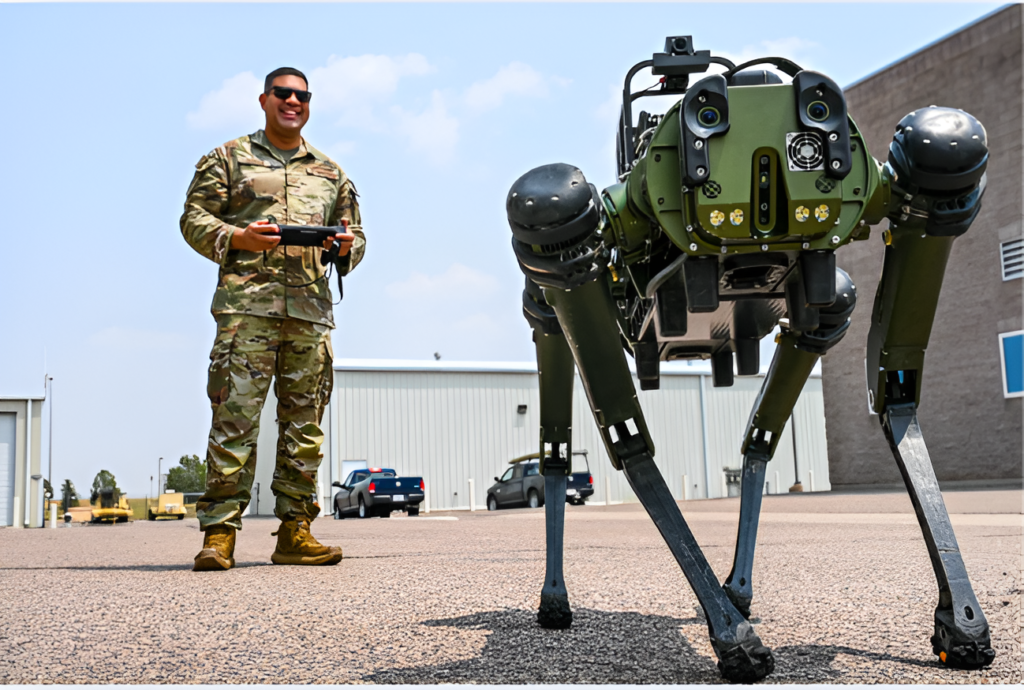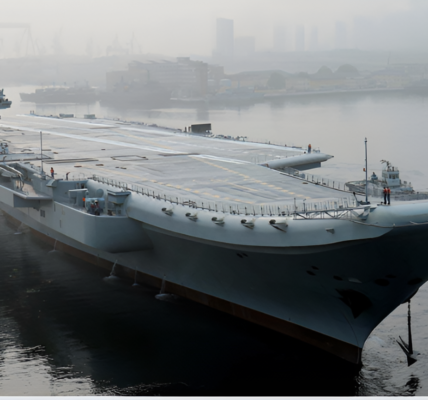
As warfare evolves, military leaders are increasingly focusing on how to harness the power of human-machine teams to gain a decisive advantage. America’s top commanders agree that mastering the collaboration between human soldiers and increasingly sophisticated artificial intelligence (AI) and autonomous systems will be a critical factor in determining the future of combat. According to the U.S. Air Force Chief of Staff, “the military that masters human-machine teaming will have a significant advantage going forward in warfare.”
The Vision for the Future
The potential of human-machine teams lies in integrating machines and AI to enhance, not replace, human capability. For example, autonomous machines can take on high-risk operations, such as reconnaissance or breaching enemy lines, minimizing human casualties. In the Navy, unmanned ships and aircraft are being developed to operate in dangerous areas, such as delivering supplies in contested environments or handling mine-clearing operations. While these are important steps in reducing risks to service members, simply replacing humans with machines does not create a revolutionary shift in military strategy.
The real transformation will occur when human soldiers and machines complement each other’s strengths. The future of warfare will depend on understanding how to leverage the unique capabilities of both humans and machines for maximum effectiveness.
Reimagining Training and Collaboration
To maximize the potential of human-machine teams, the military needs to rethink its approach to training and collaboration. Traditionally, efforts to improve human-machine integration have focused on having AI explain its reasoning. However, this method often leads to suboptimal results. AI explanations often don’t improve the decision-making process because humans instinctively trust AI, even without fully understanding its reasoning. This can lead to an over-reliance on AI without enhancing team performance.
Instead, the key to effective human-machine teams lies in developing intuitive human models that allow soldiers to instinctively collaborate with AI. Humans are better equipped to process context, tacit knowledge, and situational awareness—things that machines are still learning to understand. A soldier’s intuition can guide interactions with AI, helping to bridge the gap between human experience and machine processing power.
Rather than simply expecting AI to explain its decisions, the military should focus on teaching soldiers how to trust their instincts and use machine capabilities in complementary ways. One of the most effective ways to do this is through training exercises that simulate real-world combat scenarios. By integrating AI tools into military exercises, service members can develop the mental models necessary to collaborate effectively with machines. Postponing this type of integration risks falling behind adversaries who are already gaining valuable experience with AI in military operations.
The Strengths of Humans and Machines
Human-machine teams become most effective when they leverage the strengths of both human and machine intelligence. Machines excel at analyzing vast amounts of data, performing repetitive tasks with high accuracy, and responding to events at superhuman speeds. For instance, AI can coordinate thousands of units in a strategy game, something that would be impossible for any human to replicate. However, AI is still limited when it comes to understanding complex human factors like the reasons behind a military operation or the subtle dynamics of a battlefield.
Humans bring valuable contextual knowledge to the table. While AI might excel at identifying enemy vehicles based on visual data, it lacks the ability to comprehend why those vehicles are positioned in a certain place or predict the mission they are part of. Machines may be able to process information at lightning speed, but only humans understand the broader strategic context of why certain actions must be taken.
The Next Step for AI in Warfare
As AI continues to advance, it’s crucial for the Defense Department to ensure that these technologies are designed with complementary skill sets, rather than simply duplicating the abilities of human soldiers. For instance, an AI that detects improvised explosive devices (IEDs) by analyzing complex data from multiple sensors could add significant value to a human-machine team, even if it identifies fewer devices than a simpler AI designed to detect more obvious IEDs. The goal is to ensure that AI tools are created with complementary strengths that enhance the human component, rather than merely replacing tasks humans can already do well.
Furthermore, AI should always be treated as a tool to assist, not replace, human soldiers. Humans remain the most critical part of any military team because they bring essential knowledge, ethics, and decision-making abilities to the table. AI can be an incredibly powerful tool, but it lacks the human touch needed to understand the moral and strategic complexities of war. AI may be able to suggest the most efficient route to achieve an objective, but only humans can understand which objectives are the most important and why they matter.
Ensuring Human Control
One key challenge that lies ahead is maintaining human control over AI in military settings. The stakes are incredibly high, and the U.S. military faces the risk of falling behind adversaries, such as Russia and China, who are rapidly developing their own AI capabilities for military use. In 2024, China notably refused to sign a joint declaration advocating for human oversight in military AI operations, highlighting the dangers of unchecked machine autonomy.
While AI can dramatically enhance military capabilities, it must always operate under human guidance. Humans are the only ones who understand the deep, often tacit knowledge that informs military decisions. As such, the most successful human-machine teams will be those that effectively integrate the strengths of both human soldiers and AI, with humans in the driver’s seat.
In the end, war is fundamentally a human endeavor. While AI may change how we fight, only humans can determine why we fight. As the military works to harness the full potential of human-machine teams, it’s crucial to remember that humans will remain the most valuable component in any future battlefield partnership.



